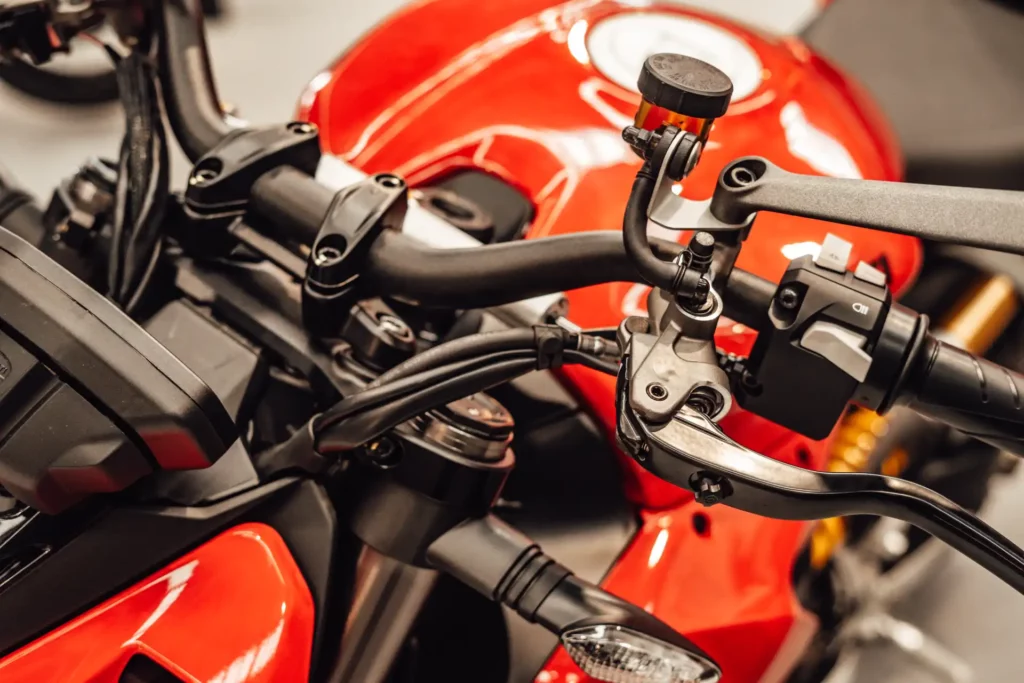Riding a motorcycle safety tips rain can be both challenging and risky—but it’s often unavoidable. Whether you’re commuting to work or caught in an unexpected downpour, wet weather riding requires extra skill, caution, and preparation.
This post shares the most effective motorcycle safety tips for rain to help you stay in control and arrive safely—no matter the forecast.
Is It Safe to Ride a Motorcycle in the Rain?
Yes—but only if you’re prepared. Rain reduces visibility, traction, and reaction time. Potholes become hidden, painted road lines turn slick, and stopping distances increase.
However, with the right technique and gear, you can ride safely in the rain. It’s all about adjusting your mindset and approach.
Motorcycle Safety Tips for Riding in the Rain
☔ 1. Wear Proper Rain Gear
Staying dry isn’t just about comfort—it’s about control. Cold and wet riders fatigue faster and may lose focus.
- Waterproof riding jacket and pants
- Rainproof gloves with grip
- Anti-fog helmet visor or insert
- Waterproof boots
- Reflective elements to increase visibility
💡 Pro Tip: Invest in a hi-vis rain suit for day and night safety.
🌧️ 2. Use Tires with Good Tread Depth
Worn-out tires have poor grip in wet conditions. Deep tread channels help disperse water and reduce hydroplaning.
- Check tire wear indicators regularly
- Maintain recommended PSI—cold weather lowers pressure
- Avoid slick tires or overly aggressive off-road tread for pavement use
🔗 Dunlop’s Motorcycle Tire Guide
🚦 3. Increase Your Following Distance
In wet weather, it takes longer to stop. Leave at least 4 to 5 seconds between you and the vehicle ahead.
- Avoid tailgating
- Give yourself more space to react to sudden stops
- Slow down gradually instead of hard braking
🌀 4. Avoid Sudden Movements
Sharp braking or throttle inputs can cause your tires to lose grip on wet roads.
- Be smooth with acceleration, braking, and steering
- Downshift gently when slowing
- Stay upright in slippery conditions—avoid hard leans
🛑 5. Brake Early and Smoothly
Wet surfaces reduce traction, so stopping safely requires more finesse.
- Use both front and rear brakes gradually
- Apply more rear brake than usual to reduce front tire slip
- If you have ABS, let it work—don’t pump the brakes
🚧 6. Watch for Road Hazards
Water can hide dangers that are barely noticeable in dry weather.
⚠️ Avoid:
- Painted lines and crosswalks
- Manhole covers and metal plates
- Leaves and oil patches
- Large puddles that could conceal potholes
👁️ 7. Maximize Visibility
You may see just fine—but others might not see you. Visibility is key when it’s pouring.
- Use your low beam headlights—even during the day
- Add reflective tape to your jacket or helmet
- Avoid blind spots and flash brake lights when slowing down
🛠️ 8. Check Your Bike Before You Ride
Rain can worsen mechanical issues. Always do a pre-ride inspection when riding in wet weather:
- Tires and pressure
- Brakes and lights
- Chain tension (if applicable)
- Rain gear stowed and accessible
🔗 MSF Pre-Ride Inspection Tips
Beginner Riders: Should You Ride in the Rain?
If you’re new to riding, it’s best to practice in light rain before taking on heavy storms. Consider delaying your ride if:
- Visibility is extremely low
- Road flooding is expected
- You’re unfamiliar with the route or conditions
Rain riding requires patience and confidence. It’s okay to wait until the weather improves.
Final Thoughts
With these motorcycle safety tips for riding in the rain, you can stay safe, dry, and in control—even when the skies open up. Preparation and mindset are everything.
🏍️ The rain may slow you down—but with skill and awareness, it doesn’t have to stop you.


